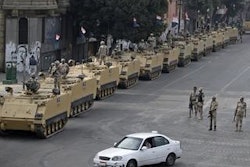Read Part I here.
Explosion proof fixtures provide protection by preventing any ignitions within the fixture housing from igniting the atmosphere outside of the fixture. Intrinsically safe fixtures are more specialized and provide their protection by being low powered and incapable of producing enough heat or spark to produce ignition. For most applications explosion proof fixtures are the most common type utilized, and so we’ll narrow our focus down to this type. This lighting must carry certification signifying it has passed testing by approved third part testing groups such as Underwriters Laboratories, and it must carry the proper ratings according to the type of materials it will be exposed to and the severity of this exposure.
Explosion proof light fixtures differ significantly from standard lighting designs. The primary differences between them relate to the ability of the explosion proof fixtures to prevent the ignition of the atmosphere outside the fixture should it contain flammable vapors, gases, or combustible dusts. In a standard light fixture, the bulb, contacts, wiring, and any switches are all directly exposed to the local atmosphere. The spark from a loose contact or the movement of the switch, and even the heat of the bulb can be enough to ignite a flammable atmosphere, thus these fixtures are obviously not suitable for hazardous locations. An explosion proof fixture however, does not work as one would naturally assume given the above explanation of why standard fixtures are unsuitable.
Since the danger of ignition comes from exposing a heat source to the outside flammable atmosphere, the first assumption one would make is that an explosion proof light fixture simply seals all the contacts, switches, bulbs, and wiring within the fixture so no contact with the outside atmosphere is possible. This however, is not the case. Explosion proof fixtures are not fully sealed per se, but are designed to contain any ignitions within the fixture and prevent any hot gases or flame from exiting the fixture before they have cooled enough to no longer pose a threat.
For example, a standard explosion proof incandescent light fixture will consist of a housing formed from heavy gauge aluminum, a thick tempered glass or polycarbonate bulb cover, and threaded conduit openings for sealed connection to a power source. The housing may feature a basic base platform which holds the bulb socket and any wiring assemblies, and a middle housing which serves as the mating surface for the lens and base assembly. Now, all these parts typically screw together with a large number of very fine threads which provide a very strong bond between the parts. These threads however, also serve a secondary and more crucial purpose. As well as holding the fixture together, these threads also act as a pathway for escaping gases. If flammable gases or vapors enter into the fixture and ignite, these threads act as a very long pathway that the ignited gases must travel along before they can exit the fixture. What this does is cause the heated gases to take so long to finally exit, that by the time they reach the atmosphere outside of the fixture they have cooled to the point of no longer being able to cause ignition.
As can be imagined, an explosion proof fixture must be of a very robust design, with careful attention given to tolerances and the quality of the materials used in its construction in order to be effective and reliable. These fixtures tend to be more heavily reinforced and strongly built, with a lot of emphasis put on using materials capable of withstanding the stresses they may be subjected to.
As a result, although explosion proof lighting is a mandatory requirement in locations deemed hazardous, the cost of these fixtures can be significant, which in turn can lead some operators to consider more cheaply made versions in an effort to meet compliance and yet spend as little as possible. This can be a mistake though, as the potential for losses and damage due to the use of subpar explosion proof fixtures simply does not merit the risk.
Larson Electronics’ Magnalight has been manufacturing and supplying high grade lighting solutions including explosion proof and intrinsically safe lighting systems to the industrial and commercial sectors for over 40 years. Magnalight maintains a steady commitment to providing the latest in high quality lighting technology and has serviced federal, state and local governments throughout the United States and Europe as well as the US Secret Service, US State Department and US Military.























